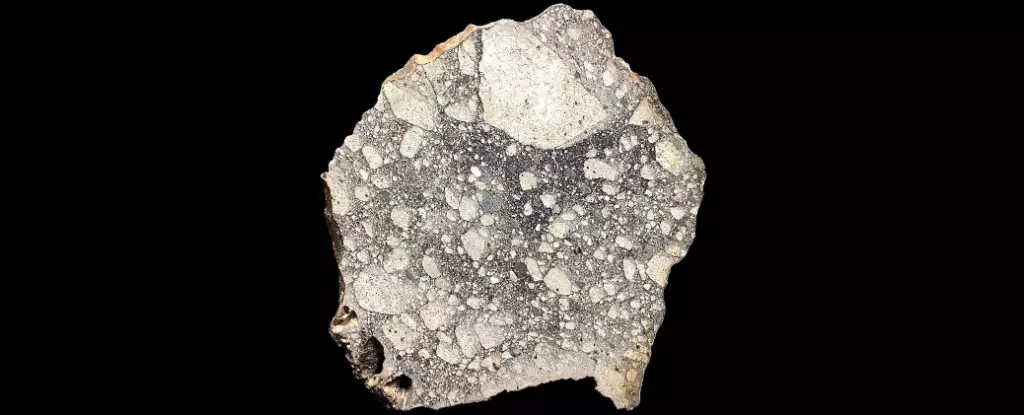The discovery of a meteorite that dates back an astonishing 2.35 billion years marks a pivotal moment in planetary science. This not only pushes the boundaries of our understanding of the Moon’s geological timeline but also challenges long-held assumptions about the duration of lunar volcanic activity. Unlike previous samples, which offered glimpses into specific periods, this meteorite acts as a bridge spanning a vast era, highlighting that the Moon remained volcanically active far beyond what we once believed. Its significance extends beyond mere dating; it underscores that the internal heat and radioactive decay processes, responsible for sustaining volcanic activity, persisted across multiple phases of lunar history. This finding encourages rethinking the lifecycle of our natural satellite, suggesting a more dynamic and prolonged geological evolution than previously imagined.
Implications for Moon’s Internal Heat and Geodynamics
For decades, lunar scientists operated under the assumption that the Moon had largely cooled and become geologically dormant within a few hundred million years after its formation. However, this meteorite’s age infuses new vitality into that narrative, suggesting the presence of sustained internal heat sources. The high uranium-to-lead ratio and the mineralogical composition point towards ongoing radioactive decay deep within the lunar interior. This internal heat would have continually fueled volcanic activity, creating lava flows that could solidify after emerging from crustal depths. Such internal processes imply a complex thermal history—more akin to Earth than a dead, frozen world. Recognizing that the Moon retained a molten core or at least an internally conductive heat source for billions of years opens doors to reconsidering its geodynamic evolution and the longevity of geological processes once thought to be short-lived.
Unique Composition Reveals Deep Lunar Processes
The meteorite’s unique geochemical signature offers tantalizing clues about the Moon’s deep interior. Containing olivine phyric basalt with relatively large olivine crystals, this rock’s composition indicates formation from a lava flow originating from deep within the Moon. Its moderate titanium and high potassium content, coupled with the high uranium to lead ratio, reinforce the idea of sustained heat and radioactive activity penetrating the lunar mantle over an extended period. Such chemical fingerprints act like a cosmic fingerprint, offering insights into the conditions deep beneath the lunar surface. They suggest a scenario where radioactive decay continued to generate enough heat to produce magma long after the initial lunar formation, emphasizing the Moon’s internal vitality and the complexity of its volcanic history.
Serendipity and the Power of Meteoritic Evidence
The true charm of this discovery lies in its serendipitous nature. Unlike space missions, which are painstakingly planned and technologically demanding, meteorites fall unpredictably to Earth, carrying within them direct samples from planetary bodies. Dr. Joshua Snape’s observation that lunar meteorites can originate from anywhere on the Moon’s broad surface underscores their value in planetary geology. These natural “grab bags” of lunar material can reveal processes and histories inaccessible through targeted missions alone due to their expansive ejection across the Moon’s surface. The impact event required to meteoritically liberate this rock complicates precise dating, but even with an uncertainty margin of 80 million years, the implications remain profound. Each meteorite thus becomes a silent ambassador, expanding our understanding without the prohibitive costs and logistical hurdles associated with lunar landings.
Impact Events as Geological Time Capsules
The transformation of this meteorite from lunar surface to Earth-bound treasure trove involved violent ejection via asteroid impact—a process that shrouds the specimen in a layer of compelling drama. Evidence of shock metamorphism and melting pockets within the rock bear witness to this violent journey through space. These impact features serve as natural timestamps, although they complicate dating efforts slightly, forcing scientists to apply nuanced techniques for age determination. Nonetheless, each fracture and vein within the meteorite encapsulates stories of explosive collisions, lunar surface reactions, and the creation of a cosmic highway that transports extraterrestrial rock to our planet. By analyzing such impact-related features, researchers are not only deciphering lunar history but also refining the dynamics of impact processes and ejection mechanics.
A Reminder of the Value Hidden in Cosmic Debris
This meteorite sharply illustrates that groundbreaking scientific insights are often embedded in unexpected places. While expensive space missions provide detailed snapshots of extraterrestrial landscapes, meteorites serve as accessible, tangible windows into distant worlds. Their capacity to reveal long-lived geological processes, chemical compositions, and thermal histories makes them invaluable. As the scientific community continues to dissect this 2.35-billion-year-old relic, it’s clear that our understanding of lunar evolution is on the brink of a paradigm shift—one driven not solely by high-tech probes, but also by the humble rocks that fall from the sky, whispering secrets of the universe’s history directly into our hands. This discovery challenges us to look less at the skies with awe and more at the ground beneath our feet, realizing that sometimes, the most profound stories come from cosmic debris delivered by chance.


Leave a Reply